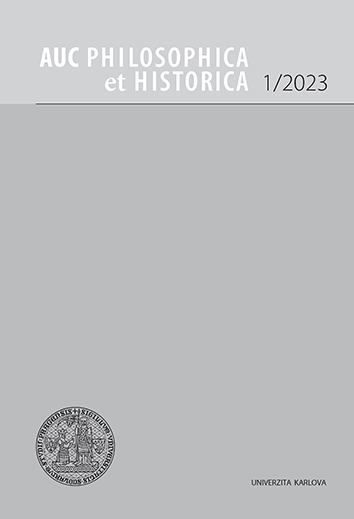AUC Philosophica et Historica je víceoborový akademický časopis zaměřený na humanitní a společenskovědné obory (filozofie, psychologie, pedagogika, sociologie, obecné, české a hospodářské dějiny, pomocné vědy historické a archivnictví, etnologie).
Časopis je indexován v databázích CEEOL, DOAJ a EBSCO.
AUC PHILOSOPHICA ET HISTORICA, Vol 2012 No 1 (2012), 123–136
Bourdieuho „historický původ čistého estetična“ jako kritika institucionální analýzy George Dickieho
[Bourdieu’s ‘Historical Genesis of a Pure Aesthetics’ as a Critique of Dickie’s Institutional Analysis]
Šárka Lojdová
zveřejněno: 01. 02. 2015
Abstract
Bourdieu’s ‘Historical Genesis of a Pure Aesthetics’ as a Critique of Dickie’s Institutional Analysis This article focuses on the connection between George Dickie’s institutional theory of art and Pierre Bourdieu’s concept of ‘fields’. The author considers Bourdieu’s article ‘The Historical Genesis of a Pure Aesthetics’ (1987) as a critique of Dickie’s institutional analysis. The first part of the article presents two aspects of Dickie’s theory which were criticized by Bourdieu – the historical dimension of the artworld and the problem of the genesis of the artist. The second part compares Bourdieu’s objections and Dickie’s formulation of the two versions of his institutional theory of art, first published in 1969 and then, in a revised version, in The Art Circle in 1984. The author argues that although Dickie does not totally neglect the historical dimension of the art institution, he fails to discern the true importance of its role, and that the artist’s genesis is reflected in the later version of Dickie’s theory but without real attention to the social background. She therefore seeks to demonstrate that Dickie’s theory offers answers to Bourdieu’s two objections, but these answers cannot be satisfactory without paying attention to the artworld’s dependence on the world we inhabit.
vychází: 2 x ročně
ISSN: 0567-8293
E-ISSN: 2464-7055
